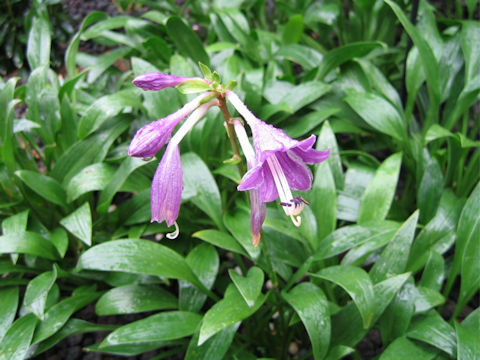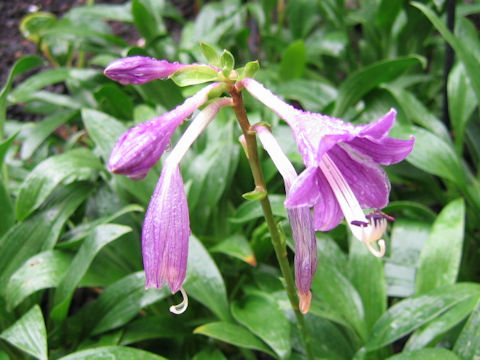 |




|

|
©N¼Ì©çkɪz·éuÂÚݬڤµiåQ[óìjvÌÏíÅ·B³´}ðLεÄLªèÜ·BtÍ·È~`Åt¿ª èAZ¢ÎFðµÄ¢Ü·BÄÉÔsðLεÄAÔFÌÔð穹ܷBuÂÚݬڤµvªR{ÌÅs«ÈÌÉεÄA{íÍQ{ÌÅíqªÅ«Ü·B
|

|
ÈM{EV®Ì½NÅAw¼Í Hosta clausa var. normalisBp¼Í èܹñB
|

|
"Sakuhana-giboushi" (Hosta clausa var. normalis) belongs to Liliaceae (the Lily family). It is a variety of "Korean plantain lily" (Hosta clausa) distributed from the central part to the northern part of the Korean Peninsula. This herb spreads by stretching the stolons. The leaves are oblong, petiolate and dark green. In summer, the flower stalks are borne and the magenta flowers come in bloom. While "Korean plantain lily" is triploid and sterile, this species is diploid and produces seeds.
|

|
ê§l¼sul¼ÎÔvÉÄA2004N0919úBeB
|



